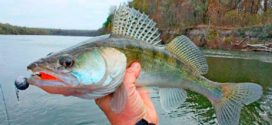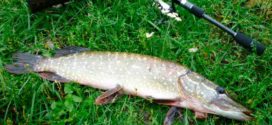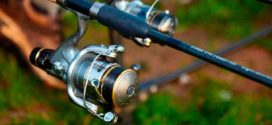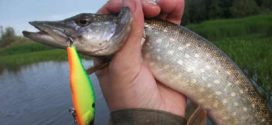When fishing, you often have to change gear. This should be done as quickly as possible, but taking into account the requirements of reliability. Most often, different hooks are attached, since their size and configuration affect the size of the catch. Over time, the process is brought to automatism, but first you need to figure out how to properly tie a fishing hook to a fishing line. Consider the basic schemes that provide reliable fixation.
Content
Knot Palomar
Ideal for both beginners and professionals. It is characterized by the simplicity of the scheme, it can be used for thin and medium-thickness fishing line. Restriction - used only for hooks with a ring. Tensile strength - up to 80%. It is important to form the knot correctly.
Procedure:
- The line is folded in half and threaded through the ring. The amount of broach is a little more than the length of the hook.
- Forming a knot around the body of the thread, but without final tightening.
- The resulting loop passes through the forearm. After that, the final fixation of the node is done. The rest of the thread must be cut off.
- At the end, it is recommended to moisten the knot.
This scheme is not suitable for thick lines and traditional braids. This is due to the small size of the hook ring, which will prevent the formation of a reliable fixing element.
Universal knot
This fastening method is suitable for all types of hooks - spatula-shaped or with a ring. Despite the apparent complexity, knitting technology is mastered relatively quickly. The advantage is the reliability of fixation, the possibility of using fishing line of various thicknesses and roughness.
- Pass it through the ring or place it along the forearm.
- The formation of a loose loop, the rest is wrapped around the fishing thread - up to 7 turns.
- The end is passed through the loop, wetted and tightened.
Be sure to do a reliability check. To do this, pull the line a little. If after that she does not change her position and does not break, everything was done correctly. Even a slight shift indicates poor quality. The result can be a breakdown of the fish.
Read about
Knot clinch
In many ways, it is similar to the universal one, but it requires fewer actions to form. Restriction - only suitable for hooks with a ring. It is characterized by ease of formation, reliability. It is difficult to apply for lines with a high roughness coefficient.
Clinch Knot Formation Technique:
- The working end of the fishing line is threaded into the ring.
- Clamping both ends, turns are made up to 7 pieces to form a twist.
- The ring should have a small loop through which the free end of the fishing line is threaded.
- Moisturizing and tightening.
The average strength index is up to 75%. For this type of knot, monofilament is preferred. With it, in addition to the hook, you can tie feeders or similar fishing tackle.
Step knot
Scope - hooks without a ring, designed for catching large fish. It is possible to use thick fishing line, braided line. Advantages - a high rate of reliability (up to 95%), with a certain skill it can be used for hooks with an eye. The disadvantage is the complexity of weaving.
Recommendations for the formation of a stepped node:
- The fishing line must be folded in half and passed along the length of the hook.
- Make two turns around the forearm and the near part of the fishing line.
- Three turns are performed to fix the entire structure.
- The end must be passed through the loop and tightened.
For a hook with a ring, only thin fishing thread is used. Otherwise, it is impossible to make a truly reliable node.
The video material clearly shows the process of tying a fishing hook:
Hello, I am Alexander, the mastermind behind the blog.
In terms of career and free time, I connected my life with the forest. How else, when you live in Karelia! In this blog, I am responsible for the hunting, hiking and equipment sections. Welcome to my world!
 Survival Lessons Tips for the survivalist, fisherman and hunter
Survival Lessons Tips for the survivalist, fisherman and hunter





